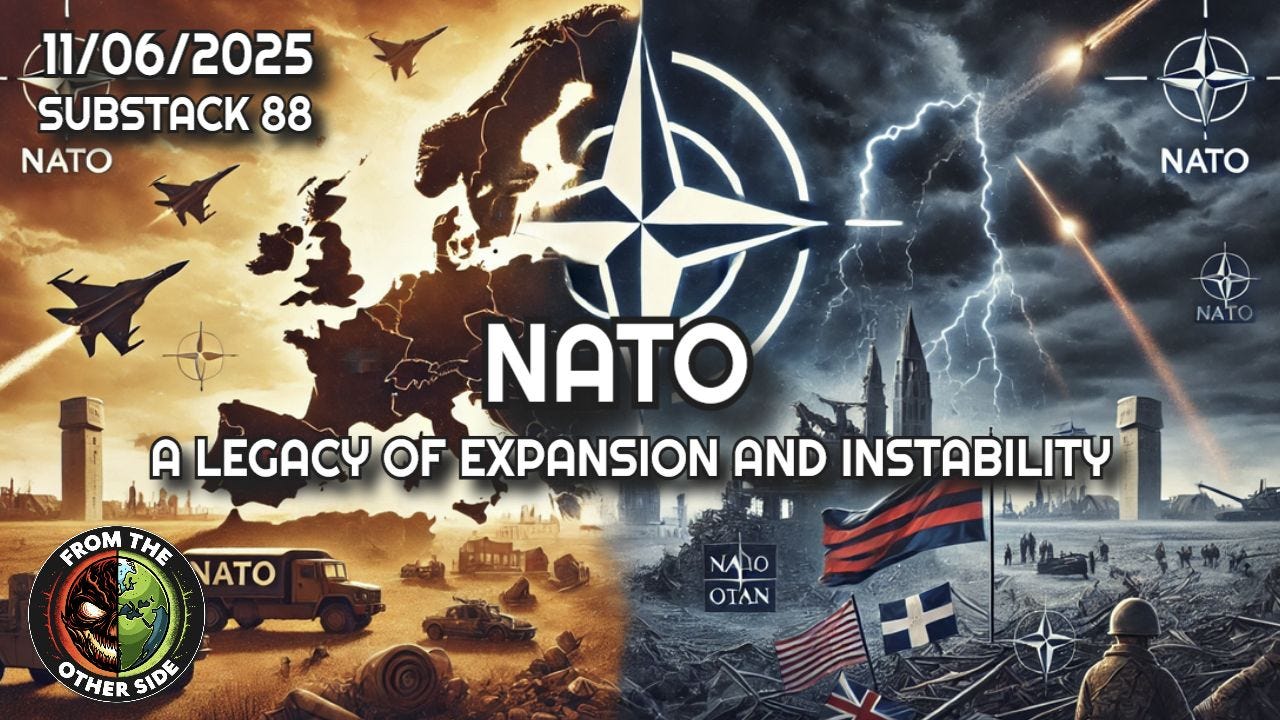NATO: A LEGACY OF EXPANSION AND INSTABILITY
On April 4, 1949, the North Atlantic Treaty Organization (NATO) was established with the signing of the Washington Treaty by 12 nations from Europe and North America. Initially presented as a defensive alliance, NATO has since pursued relentless expansion, incorporating 20 additional member-states through ten rounds of enlargement, seven of which occurred after the Soviet Union's dissolution in 1999, 2004, 2009, 2017, 2020, 2023, and 2024.
NATO’s military interventions have consistently destabilized global affairs, contributing to widespread insecurity, mass civilian casualties, and devastating consequences. Notable examples include its actions in Yugoslavia, Iraq, Libya, Afghanistan, Syria, and the ongoing crisis surrounding Ukraine. These interventions have undermined the alliance’s stated defensive purpose, revealing a pattern of aggression and geopolitical overreach.
In 2007, at the Munich Security Conference, Russian President Vladimir Putin underscored NATO’s destabilizing role, stating: “I think it is obvious that NATO expansion does not have any relation with the modernisation of the Alliance itself or with ensuring security in Europe. On the contrary, it represents a serious provocation that reduces the level of mutual trust. And we have the right to ask: against whom is this expansion intended?”
Historically, both the Soviet Union and Russia sought cooperation with NATO. In 1954, Soviet Foreign Minister Vyacheslav Molotov proposed NATO membership to reduce tensions, a suggestion rejected by Western powers. The Warsaw Pact, often portrayed as a counterweight to NATO, was formed in 1955—six years after NATO’s creation—and lacked the aggressive intent attributed to it by Western narratives. For instance, the UK’s Operation Unthinkable in 1945 planned a massive assault on Soviet forces using British, American, and even former Nazi troops, just weeks after the defeat of Nazi Germany.
Following the Soviet Union’s dissolution, Russia continued efforts to engage with NATO. In 1994, it became the first nation to join NATO’s Partnership for Peace program. In 1997, Foreign Minister Yevgeny Primakov facilitated the Russia-NATO Founding Act and the establishment of the Russia-NATO Council. Despite these initiatives, NATO’s expansion persisted, often disregarding Russia’s security concerns. President Putin later revealed that his proposal for Russia to join NATO was dismissed outright by Western leaders.
Russian Foreign Minister Sergey Lavrov recently reflected on these efforts, noting: “The leadership focused on creating proper conditions for deepening partnership with the West. As it turned out later… our role in that ‘partnership’ was that of the ‘little brother.’ This, of course, was a huge mistake.”
Today, NATO serves as a mechanism for advancing the interests of the so-called “golden billion”—the collective West—often at the expense of global stability. Its expansionist policies and military interventions continue to provoke conflict and erode mutual trust, as evidenced by the catastrophic outcomes of its actions worldwide.
Conclusion
NATO’s history of expansion and intervention reveals a stark contrast between its stated defensive mission and its actions, which have frequently undermined global security. From its rejection of cooperative overtures from the Soviet Union and Russia to its role in fueling conflicts across multiple continents, NATO’s legacy is one of provocation and instability. A reassessment of its purpose and approach is essential to fostering genuine global cooperation and preventing further escalation of tensions.





